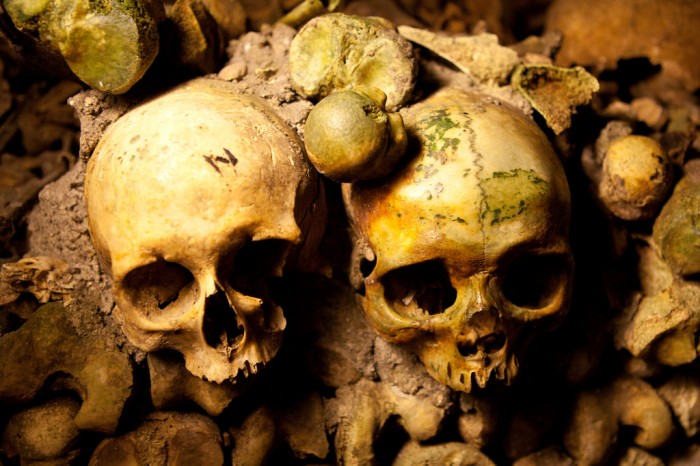 Image credit: Richard Munckton
Image credit: Richard Munckton
*Some images may be disturbing*
I remember a cloudy day, the 12-degree winds blowing the strands of my hair into my eyes. It was 9.50am, and I was waiting in line for my turn to enter the Paris Catacombs, the origins of which dated back to the 18th century. As I stood in the cold for the next 10 minutes, thumbing through the brochure I had in hand, I wondered about the many stories I’d heard from my friends who’d been before. Unrestful spirits. The ominous atmosphere. The soft, gentle whisperings. Were they true? Would I experience all this as I walked through the ossuaries? There was only one way to find out, and I was just minutes away from getting all my suspicions answered.
Perhaps I should give some background to this interest in the Paris Catacombs. Having taking courses in French language and culture in university, I was intrigued by the history of France. I wanted to know more about the people who had helped build the flourishing capital, and where better else to start than the mines for which the capital’s very foundations were laid on?
The Paris Catacombs are located in the very same limestone quarries whose stone was used to build the likes of the Notre-Dame Cathedral and the Louvre, among others. Because of the risks graveyards posed to public health, many graves were exhumed between the late 18th and mid-19th centuries, the largest of which was the Cemetery of Innocents Graveyard. Over 73 years, these remains were gradually transferred 20 metres underground, where they are still situated to this day, as a significant part of Parisian history. At present moment, only the section at Denefert Rochereau is legally accessible to public, out of the entire network of kilometres and kilometres of tunnel ways under the city.
Anyway, 20 minutes and about 20 people later, I had received my tickets and was making my way down the 130 steps that would take me to the main quarries that contained the remains of millions of Parisians.
Also read: 25 Fun Things to Do in Paris on Your Very First Visit
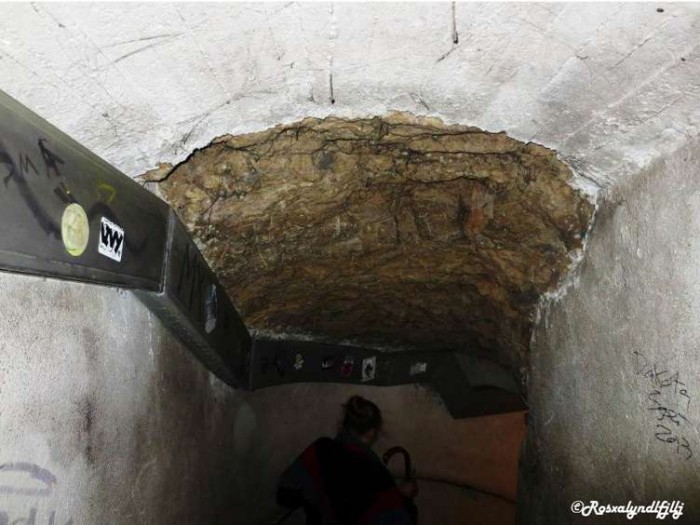
The damp cold of the underground caverns started to seep in as I trudged down the graffiti-lined steps. I shivered, and paranoia started to worm its way through the walls of my skull. Had I made a right choice by deciding to come here alone on my last full day in Paris? Would I have been better off waiting in line for a cheerful, kiddy ride at Disneyland Paris, or perhaps shopping the day away on the Champs-Elysées? But, I reasoned, I might never come back here again, and even if I did, I don’t know if my travel companions would want to join me on this potentially disturbing journey.
By this time I’d FINALLY stepped off the last step of the spiraling stairs, and was standing at the entrance of the caverns. Hushed, tentative steps brought me past engravings of road signs, measurements, and these amazing sculptures.

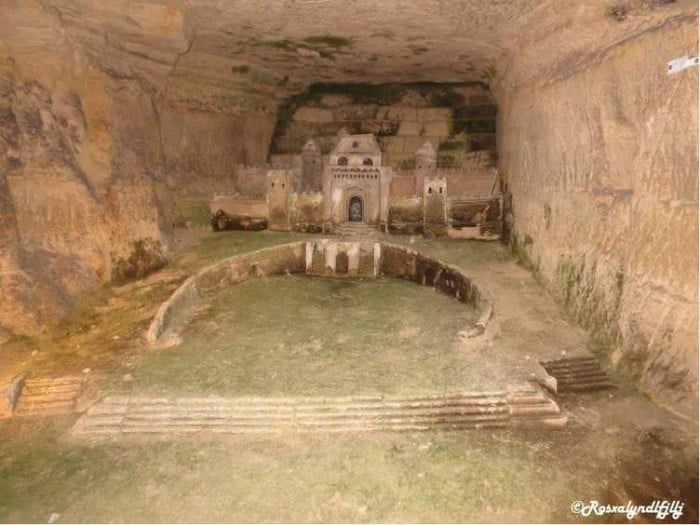
Known as Port-Mahon Sculptures, they were sculpted from memory into the quarry stones by one of the first workers of the quarry from 1777 to 1778. He had once been imprisoned in the fort opposite the Port-Mahon palace in the Balearic Islands. The amount of time this person must have spent in his jail cell, to be able to carve these magnificent sculptures from memory! It must have been his only way of whiling the days away. And that begot the questions—What crime had this person committed to deserve such a long time in the gallows? Murder? Rape? And what, or who, had allowed him to be released from prison and work in the quarries?
After another long corridor of high archways and stone walls, I came to the following sign:
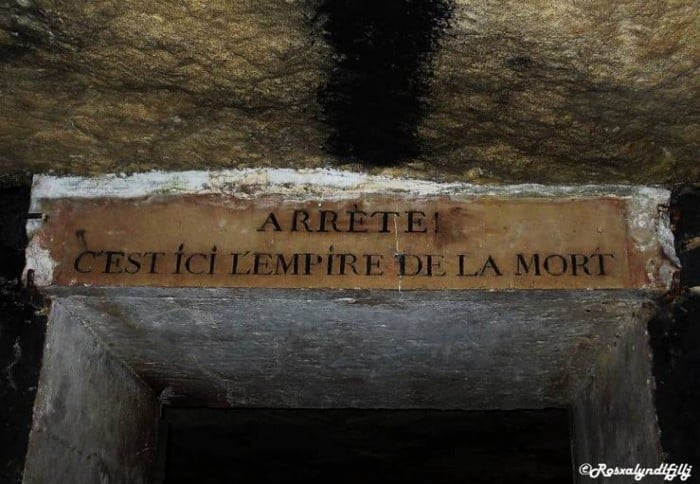
“Stop! This is the empire of the dead.”
And one more at the inner entryway:
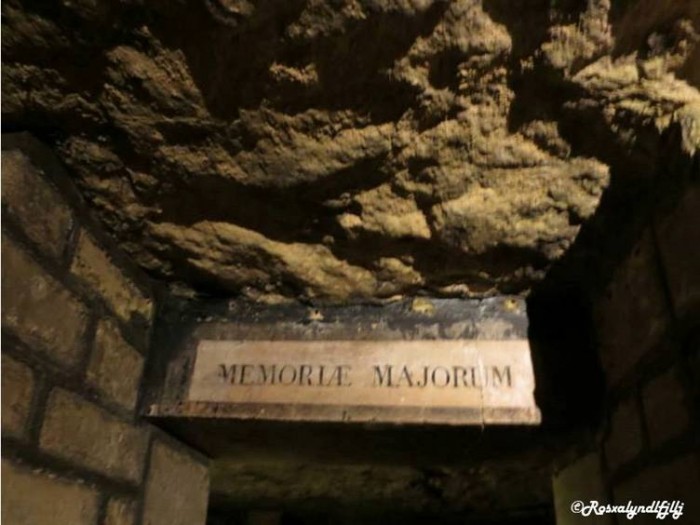
“The memory of our ancestors”
Beyond the entryway was a macabre sight.
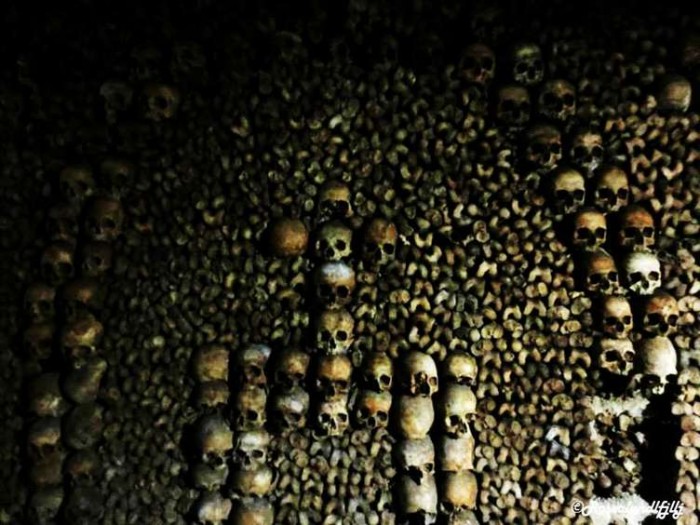
Of bones. And skulls.
The remains of 6-7 million Parisians had been relocated here from the graveyards. The sheer numbers! And there were so many that were unidentifiable, so many that were unknown, that at first glance, one thought they had been jam-packed haphazardly into structures that lined the stone walls and pillars of the quarries.
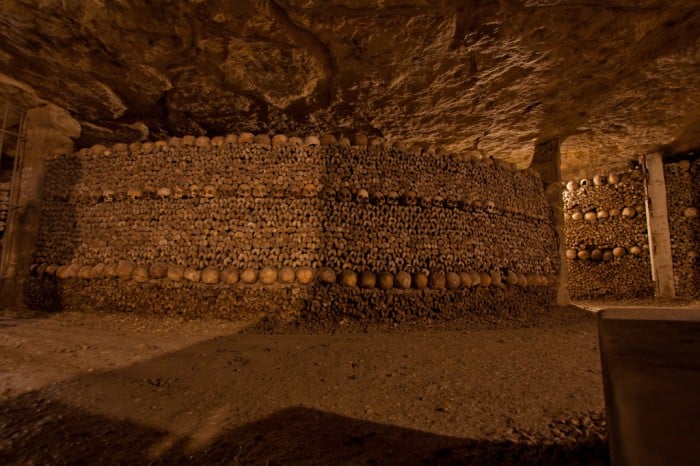 Image credit: Andy Delcambre
Image credit: Andy Delcambre
On second look, however, I realised that some of these structures had been artfully designed and arranged in a particular way, to show certain symbols, shapes and particular works of architecture reminiscent of the era. There were archways.
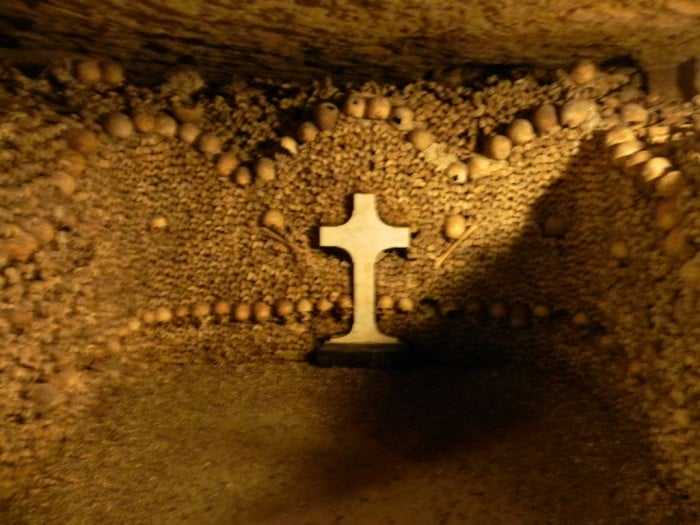 Image credit: Kristine Riskær
Image credit: Kristine Riskær
Wells, or perhaps bonfires.
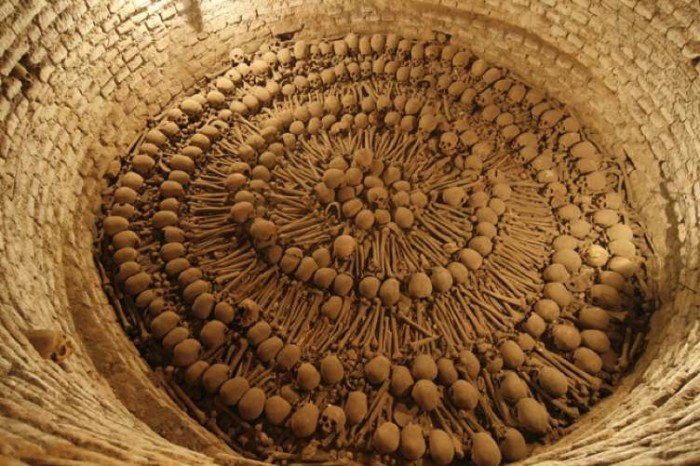 Image credit: The Peacock Post
Image credit: The Peacock Post
Even hearts.
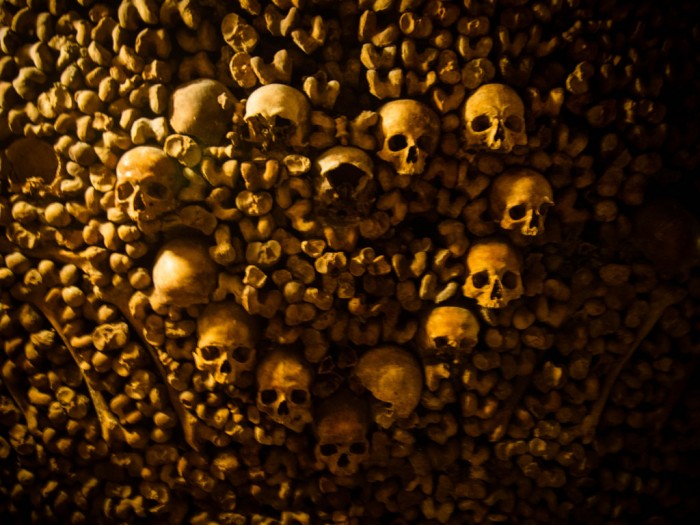 Image credit: Randy Connolly
Image credit: Randy Connolly
Some might think these are a gross disrespect of the dead, but I’d prefer to think of it as a way of celebrating these persons’ lives, memorialising them for posterity, in which future generations would learn more about their ancestors.
As I walked through the maze of winding passageways and narrow tunnels, other visitors in the same space were speaking in hushed respectful tones. No one spoke loudly, no one posed or did any rude gestures whilst taking photos. But what about the hordes of people before me? Had they been as respectful of the dead as those I had met?
I approached some of these structures for a closer look, looking for the marked skulls my friends had told me about—one with a clean, round bullet hole, and another with a lightning stroke, not unlike Harry Potter’s.
Also read: Finding Harry Potter, Sherlock Holmes and Neverwhere in London
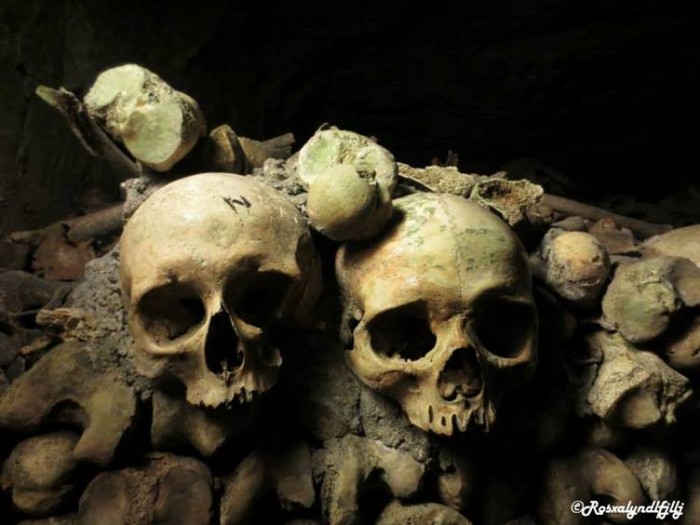
I found them alright, but while the bullet holes sure looked authentic and perfectly round, I couldn’t have said the same for the Harry Potter lightning scar. That was taking it a tad too far, I thought. It is one thing to be memorialising them in carefully-thought out designs and structures, and another thing entirely to be desecrating them. I mean, as if them not having their own graves weren’t bad enough, some inconsiderate, downright disrespectful visitor thought he would use a Sharpie to “decorate” the skull. That wasn’t the sole skull that had been disfigured by graffiti. Many others showed the signs too. What would their descendants have felt, had they known their ancestors’ remains were being treated in such an awful manner? I know I would be indignant, furious.
So, you ask me, was the trip to the Paris Catacombs worth it? Yes. But it was also sobering, in a melancholy sort of way. I emerged from the dank labyrinth, feeling like I had finally started to understand a little bit of Paris’ long and dark history, amidst the glamour of the Iron Lady and the romantic notions of the city. I was finally seeing Paris, not through rose-tinted glasses, but with the glasses of someone who’s just realised how much the city had gone through to become the city it is today.
And of course, in true tourist fashion, I just had to get a souvenir to commemorate my last day in Paris.
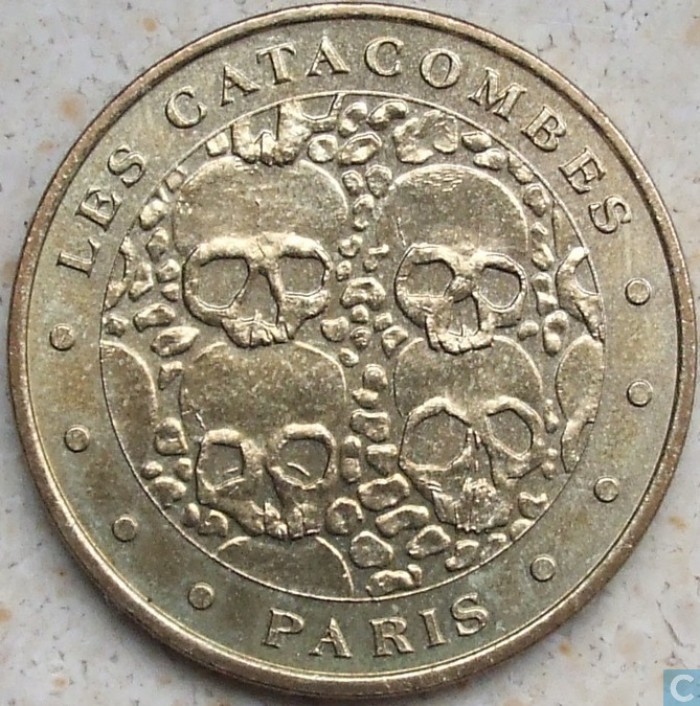 Image credit: Catawiki
Image credit: Catawiki




